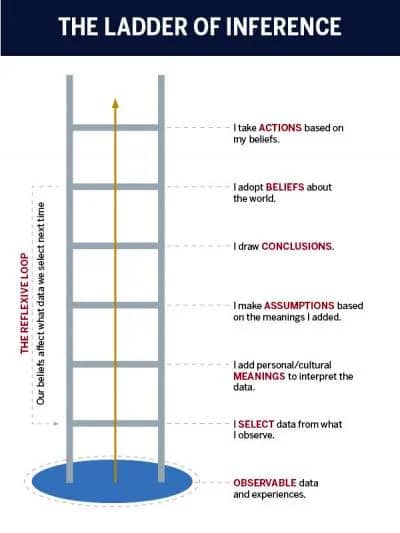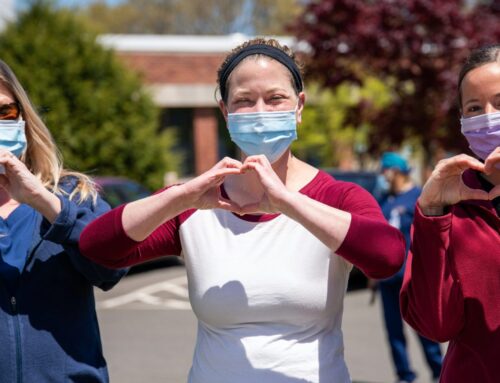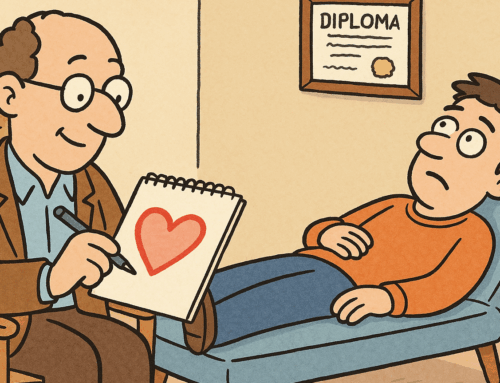How to foster kindness in the workplace
“Unexpected kindness is the most powerful, least costly, and most underrated agent of human change.”
– Bob Kerry, US Senator
I started going back to the office two days a week towards the end of 2021. I knew no one, got lost in the building, didn’t know where anything was, and resolved to figure it all out on my own.
I almost never saw anyone in the building anyway. Until one day, someone was sitting across from my normal desk. We got talking, she showed me the building, answered my questions, and invited me to the 5k she and some of her colleagues were organizing.
These simple acts of kindness helped me go from feeling disconnected to connected to my organization and all the people there. I’ve since reflected on the experience and asked myself:
- How kind am I at work and how does kindness affect the business?
- What gets in the way of people being kind at work?
Initial research illustrated the results of kind work environments range from boosting an individual’s well-being to increased organizational productivity and efficiency. But being kind and fostering a kind work environment is not easy. Things get in the way. We must become aware of the obstacles that keep us from being kind and adopt behaviors that foster environments of kindness.
Kindness Blocker: Stress
Scientist: Don’t worry about being stressed. Some rocks become diamonds under extreme pressure.
Patient: What about the other rocks?
Scientist: Oh, they turn to dust.
– Jonny Sun, Canadian Author
We all have loads to do and not enough time to get everything done. Responsibility and stress grow as individuals move into leadership positions and begin making more important decisions. This can be a recipe for disaster because research shows people who make decisions under stress do not –
- Evaluate information as thoroughly as they should, resulting in suboptimal decisions.
- Rely more on biases and habits, causing less openness to diversity of thought.
- May leave more up to chance, leading to unnecessary risk-taking.
The expectation cannot be to not stress, nor can it be to just make better decisions. Although, plenty of published research exists on how to do both those things. A different and underrated skill may be easier to practice and optimize.
Kindness Enabler: Extend Apologies
“An apology is the superglue for life! It can repair just about anything.”
– Lynn Johnson
Mistakes are inevitable no matter how well we get at managing our stress or making decisions. The right intentions and approach to making an apology are essential to the effectiveness of the apology. If the intention is to only restore trust or salvage a reputation, then the apology will not serve its purpose.
Good apologies communicate three essential things: First, we care about the other person enough to go out of our way to say something. Second, we learned something new. Third, apologies set new expectations based on our learning.
How does one craft an effective apology? Here are some adaptable sentences to use –
- I realize my behavior could have had ___________ type of an impact.
- I was coming from a place of ___________, and I realize I did ________ wrong.
- I’m telling myself that if I did x, y, and/or z in the future, then things will go better.
Another cool thing about apologies is that, contrary to the popular belief that apologizing for something is a sign of weakness or incompetence, research shows that leaders who apologize for mistakes are perceived as more competent.
When we are better apology givers, everyone we work with will experience us as more kind and competent leaders – even when mistakes are made – resulting in a healthier work environment and greater productivity.
Kindness Blocker: Stories
“The story I’m telling myself is…”
–Dr. Brené Brown
I play basketball with a group of guys once a week. The group plays twice but I usually can only play one night. A couple of weeks ago I received a text message from the organizer asking me not to come on my normal night and to instead play on the second night.
For the first 5-10 minutes after receiving the text I wondered why the request had been made. I told myself ridiculous stories about what prompted it – all of which made me feel unwanted and negative. I quickly realized I was spiraling and caught myself. I identified the facts and stopped – I received a text asking me to come on a different day. That was all I knew for sure.
This type of assumptive behavior is common. We all do it. Information comes to us, we interpret it and then seek to understand the meaning of that information. This pattern is best conceptualized as the Ladder of Inference. Chris Argyris, a prominent business scholar, and Harvard professor created the model. In short, the rung closest to the ground is the objective data we take in. Humans quickly begin to climb the ladder by making inferences about their world and sometimes they end up multiple rungs up from the bottom with unhelpful stories.

Kindness Enabler: Express Curiosity and Satisfy Curiosities
“Be curious, not judgmental…”
– Unknown
The text I sent in response to the request I got to play basketball a different night was – “Can do. What changed?” I quickly found out that multiple guys in the group could only play on the first night of the week due to their work schedules and fewer bodies meant more playing time for them. So, if I could be flexible, it would help them out.
After experiencing something at work with a colleague, manager, or executive we can avoid mentally climbing the Ladder of Inference by responding to these prompts and having a conversation with the other person.
- What are the objective facts? (e.g., Jane didn’t show up for our 1:1, John did not email the deliverable to the client by our agreed-upon deadline)
- What is the story you’re telling yourself? (e.g., Jane does not like me, John is uncommitted)
- Formulate a statement like this to start your conversation – “I noticed (objective facts). What happened/Can you help me understand?”
- At some point share the story you were telling yourself- “I see. Thanks for sharing – I was telling myself (story).” [Pause].
Another way we can be kind, as it relates to this topic, is when we are on the other end of the equation (i.e., we are the one doing something that could be interpreted incorrectly by others).
This is important if you are a leader or in a position of authority. The people you lead will tell themselves stories to fill in any gaps you don’t proactively fill. Of course, you can’t be providing extra details and context on every little thing all the time, so you need to be selective. Activities like delegating work and giving others feedback are good examples of when the background, context, and purpose of your message should be shared.
When we exercise curiosity by asking questions, we enable ourselves to rely on more objective information and make better decisions. As leaders, when we transparently share context and “whys” with those we lead, the less inferring they have to do, resulting in higher performance and better contributions.
Kindness Blocker: Negativity Bias
“You need the negative focus to survive, but a positive one to thrive.”
–Dr. Richard Boyatzis, Professor of Organizational Behavior
The experience I shared about being asked to play basketball on a different night is a great example of negativity bias. Negativity Bias is a heavily researched principle that states human disposition is to pay attention to, learn from, and use negative information more than positive information.
This is observable when an employee gives a stellar presentation but forgets to mention one thing and the employee considers the presentation a failure. Most of us can also experience this right now if I ask you to write down five things you dislike about your job and then five things you like about your job, you would likely finish the dislike list quicker.
The tricky thing about work is that tasks/projects are so fast-paced that we don’t usually have time to pause and reflect on the positive things that happened that day/week to balance the negatives. We are too worried about keeping things on track so nothing goes wrong.
If we are not proactively trying to notice positive things then our negativity bias might nudge us into a negative state of mind likely resulting in more stress.
Kindness Enabler: Offer Compliments
“I can live for two months on a good compliment”
–Mark Twain
I have a friend and whenever we spend time together, I come away feeling more positive. Primarily because he makes a point to notice an interesting idea I shared, the shirt I wore, or how I handled something, and then he gives me specific compliments. He is a force for good in many people’s lives.
I don’t know very many people like him – so easily finding and giving compliments to friends, colleagues, and strangers (yes strangers!). Why don’t people extend compliments more graciously? Well, research shows one reason could be people underestimate the positive impact of their compliments on receivers. The researchers also found people believed their compliments might make receivers feel uncomfortable when in fact receivers reported feeling better and more comfortable after receiving compliments.
So trepidation around compliment giving makes sense — if someone believes that their words won’t make someone else’s day better and that their words could actually make it worse (in the form of discomfort), then why give compliments? This is one of the beauties of research — it can busts myths and nudges us to behave in more kind and pro-social ways.
Everyone is walking around paying greater attention to the negative things than the positive; we all could be a force for good by bringing more positive things to the surface by extending genuine compliments. Here are some tips on how to get started –
- Start with someone you feel comfortable with – practice delivering compliments to people you know to build some compliment-giving confidence
- Be grateful – Gratitude is more organic an expression than compliment giving and is a good step in the right direction. Tell someone “thank you” for anything that helped save you time or energy.
- Be specific – telling someone they did a good job is a step in the right direction; however, if you can tell them what exactly they did then the quality of your compliment goes up.
- Express the “small” ones – keep it simple and give compliments no matter how small.
- Decide on a number – decide how many compliments you feel comfortable giving in a day and hit it.
Something I love about kindness is how supernatural it can seem. When we are kind we are literally making something out of nothing. We are simply using our words to positively influence people, teams, and organizations to be more human. The results range from boosting an individual’s well-being to increased organizational productivity and efficiency.
So – be kind. Apologize. Ask questions. Give compliments. Repeat.







